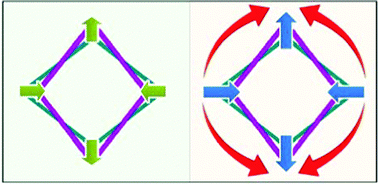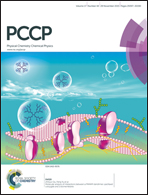Quantum theory of concerted electronic and nuclear fluxes associated with adiabatic intramolecular processes
Abstract
An elementary molecular process can be characterized by the flow of particles (i.e., electrons and nuclei) that compose the system. The flow, in turn, is quantitatively described by the flux (i.e., the time-sequence of maps of the rate of flow of particles though specified surfaces of observation) or, in more detail, by the flux density. The quantum theory of concerted electronic and nuclear fluxes (CENFs) associated with electronically adiabatic intramolecular processes is presented. In particular, it is emphasized how the electronic continuity equation can be employed to circumvent the failure of the Born–Oppenheimer approximation, which always predicts a vanishing electronic flux density (EFD). It is also shown that all CENFs accompanying coherent tunnelling between equivalent “reactant” and “product” configurations of isolated molecules are synchronous. The theory is applied to three systems of increasing complexity. The first application is to vibrating, aligned H2+(2Σg+), or vibrating and dissociating H2+(2Σg+, J = 0, M = 0). The EFD maps manifest a rich and surprising structure in this simplest of systems; for example, they show that the EFD is not necessarily synchronous with the nuclear flux density and can alternate in direction several times over the length of the molecule. The second application is to coherent tunnelling isomerization in the model inorganic system B4, in which all CENFs are synchronous. The contributions of core and valence electrons to the EFD are separately computed and it is found that core electrons flow with the nuclei, whereas the valence electrons flow obliquely to the core electrons in distinctive patterns. The third application is to the Cope rearrangement of semibullvalene, which also involves coherent tunnelling. An especially interesting discovery is that the so-called “pericyclic” electrons do not behave in the manner typically portrayed by the traditional Lewis structures with appended arrows. Indeed, it is found that only about 3 pericyclic electrons flow, in contrast to the 6 predicted by the Lewis picture. It is remarkable that the time scales of these three processes vary by 18 orders of magnitude: femtoseconds (H2+(2Σg+)); picoseconds (B4); kilosceconds (semibullvalene). It is emphasized that results presented herein are appearing in the literature for the first time.


 Please wait while we load your content...
Please wait while we load your content...